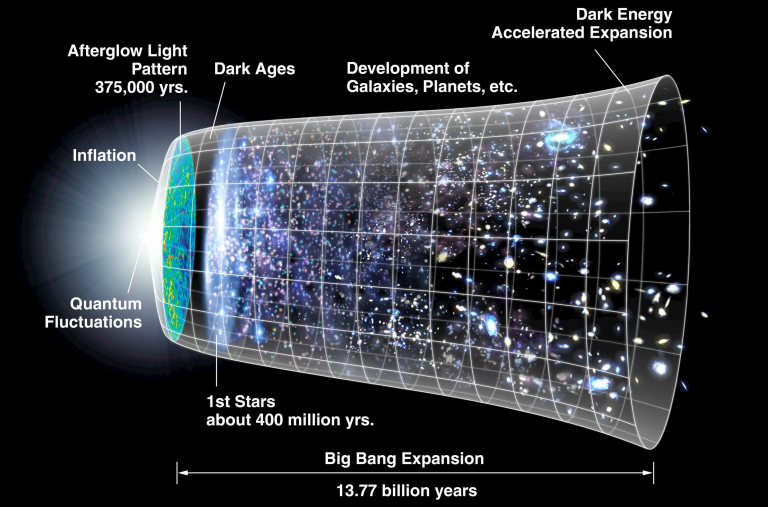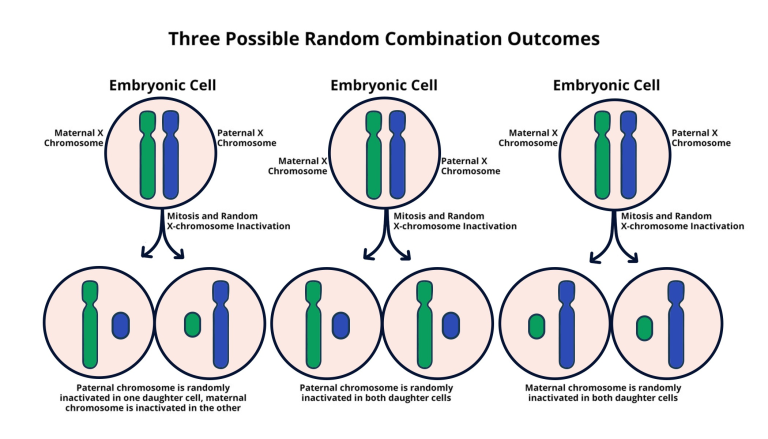The advent of the topological qubit represents a transformative leap in quantum computing advancements, poised to revolutionize how we harness quantum mechanics for practical applications. Developed by Microsoft, this innovative qubit promises to offer enhanced stability and reliability, essential for powering ultrafast quantum computers that can tackle previously insurmountable challenges. By leveraging the principles of superposition in computing, the topological qubit seeks to overcome the fragility that has historically plagued quantum systems, offering new avenues for breakthroughs in fields ranging from chemistry to advanced materials science. Spearheaded by notable figures such as Chetan Nayak at Microsoft quantum research, this development reflects both a significant scientific achievement and a bold step toward realizing the full potential of quantum technologies. As we stand on the brink of a new era in computing, the implications of topological qubits could change our technological landscape forever.
Within the realm of quantum technologies, the emergence of the topologically protected qubit serves as a beacon of hope for researchers striving to unlock the full spectrum of quantum capabilities. This cutting-edge concept, often referred to as a fault-tolerant qubit, is engineered to maintain coherence and stability, setting it apart from traditional qubits that are prone to decoherence. Pioneered by leading innovators like Chetan Nayak at Microsoft, the topological qubit stands to accelerate the journey toward functional ultrafast quantum computers, encouraging a new wave of exploration in fields that rely on quantum phenomena. This approach not only enhances computational reliability but also aims to integrate seamlessly into existing quantum computing frameworks, setting the stage for remarkable leaps in our understanding of the universe at the subatomic level.
Understanding the Promise of Topological Qubits in Quantum Computing
Topological qubits represent a significant leap in the field of quantum computing, diverging from traditional qubit models in their inherent stability and reliability. Unlike conventional qubits, which are susceptible to environmental interference and decoherence, topological qubits leverage the principles of topology to create more resilient quantum states. This robustness is vital in advancing ultrafast quantum computers, as it minimizes error rates and enhances the capacity to perform complex computations. The theoretical foundation laid by physicists emphasizes that combining superconductors and semiconductors can yield a new form of matter with unique properties, crucial for simulating quantum phenomena in nature.
The potential applications of these topological qubits stretch far beyond mere computational speed; they offer a pathway to solving some of the most intricate problems faced in physics and materials science. Through quantum computing advancements, researchers like Chetan Nayak at Microsoft are pioneering the use of topological qubits, which could pave the way for breakthroughs in various sectors, including material science and chemistry. As the technology matures, it promises not only to challenge existing supercomputing capabilities but also to address pressing global issues, such as environmental sustainability, by enabling transformative discoveries.
The Role of Superposition in Enhancing Quantum Computing Power
Superposition lies at the heart of quantum computing, and it is this principle that elevates the computational power of qubits over traditional bits. In classical computing, bits are binary, holding a value of either 0 or 1. However, qubits, through superposition, can embody multiple states simultaneously, allowing for the parallel processing of vast amounts of information. This capability is what enables ultrafast quantum computers to tackle problems deemed insurmountable by classical systems, such as simulating complex quantum phenomena or optimizing large-scale operations. Understanding how to stabilize superimposed states is critical for the success of quantum algorithms in real-world applications.
Moreover, the interplay between superposition and entanglement further amplifies the potential capabilities of quantum computers. Entangled qubits can share states across distances, creating a network of correlations that enhance computational tasks. The work being done by teams at Microsoft, focusing on stable and robust qubits like the topological qubit, aims to manage these states effectively. As quantum computing technology advances, the eventual integration of superposition into practical applications will revolutionize fields such as cryptography, machine learning, and drug discovery, optimizing processes that conventional computing methods would struggle to address.
Chetan Nayak’s Vision: Advancing Microsoft Quantum Research
Chetan Nayak, a visionary in the realm of quantum science, is at the forefront of Microsoft’s quantum research endeavors, particularly in the development of topological qubits. His extensive work as a Technical Fellow has focused on harnessing the properties of quantum mechanics to solve complex computational challenges. Nayak’s leadership in the research team reflects a commitment to innovation, aiming to push the boundaries of what is achievable in quantum computing. Through a careful blend of theoretical insight and practical experimentation, he explores how these qubits can not only accelerate computational speed but also improve accuracy in data processing.
The research culture at Microsoft, under Nayak’s guidance, fosters collaboration across various disciplines, integrating knowledge from physics, materials science, and engineering. This interdisciplinary approach is essential in facing the multifaceted challenges that quantum computing presents. Nayak has articulated a future where quantum technologies will have a profound impact on society, from enhancing artificial intelligence applications to developing more effective materials for energy storage. By advancing the understanding and capabilities of qubits, Microsoft aims to lead the way in unlocking the full potential of quantum computation.
The Challenges Ahead in the Quantum Computing Frontier
Despite the promising advancements in quantum computing brought forth by innovations such as topological qubits, significant challenges remain in realizing their full potential. One of the foremost obstacles involves maintaining the coherence of qubits in a noisy environment. Quantum systems are immensely sensitive; even minimal external perturbations can cause loss of information through decoherence. Researchers must devise more robust methods to shield topological qubits from environmental noise while ensuring they can operate effectively. Overcoming these hurdles is critical to moving closer to practical quantum computing applications.
Moreover, scaling up the number of qubits is another significant challenge. Current prototypes demonstrate the potential of topological qubits, but to transition from a handful to thousands or even millions of qubits, substantial engineering and technological breakthroughs are imperative. Nayak emphasizes the importance of developing fault-tolerant systems that allow for error correction without massive overhead. As quantum computing antennas, the commitment from Microsoft and partnerships with organizations like DARPA provides hope for addressing these challenges, ultimately propelling us towards a future where quantum computers can tackle real-world problems at an unprecedented scale.
Exploring the Future of Ultrafast Quantum Computers
The evolution of ultrafast quantum computers heralds a new era in computational capabilities, driven significantly by advancements in topological qubits. These devices promise to revolutionize how we approach complex calculations and simulations essential in fields ranging from cryptography to materials science. With the potential to exceed classical supercomputers by orders of magnitude, ultrafast quantum computers could ultimately allow researchers to explore the intricacies of quantum phenomena that remain poorly understood. As teams led by experts like Chetan Nayak continue to refine these technologies, a paradigm shift in computing is on the horizon.
Additionally, as quantum computing technologies mature, the impact on industries could be profound. The ability to perform complex simulations and optimizations at unprecedented speeds may enable breakthroughs in drug discovery, climate modeling, and artificial intelligence, among others. The collaboration across academic and industrial landscapes, exemplified by Microsoft’s partnerships, underscores the collective commitment to unlocking the full potential of quantum computing. By harnessing the unique properties of topological qubits, the pathway toward practical, ultra-efficient quantum computers is becoming clearer, opening doors to innovations that can reshape our understanding of the universe.
Implications of Quantum Computing for Material Science
Quantum computing holds quintessential implications for materials science, particularly through the application of topological qubits. As physicists seek to comprehend and create new materials, traditional computational techniques can fall short in addressing the complexity involved in simulating intricate quantum interactions. Quantum computers, leveraging superposition and entanglement, can model such scenarios accurately and efficiently. The insights gained can lead to the discovery of novel materials that may revolutionize technologies such as energy storage, superconductors, and nanomaterials.
For instance, high-temperature superconductors have garnered considerable interest, yet their mechanisms remain elusive. Quantum computing could facilitate the mapping of these materials’ properties, enabling researchers to design improved variants with enhanced performance. By advancing understanding and accelerating the discovery process, tools emerging from quantum computing could greatly contribute to sustainable practices in various sectors, thereby positioning quantum technology as a cornerstone in addressing global challenges.
Error Correction Strategies in Quantum Computing
Error correction is a critical aspect of optimizing quantum computing performance, particularly when working with qubits that are inherently fragile. In quantum information processing, errors can occur due to environmental noise, leading to significant challenges in reliably conveying quantum information. Topological qubits present a promising avenue for error correction due to their robustness against specific types of errors. By employing a strategic combination of quantum algorithms and hardware-level stabilization, researchers can ensure that the data remains coherent, thus maximizing the computational integrity of quantum operations.
As techniques continue to evolve, the implementation of error correction will become increasingly sophisticated, supplementing the capabilities of topological qubits. Research initiatives like those from Microsoft emphasize the integration of error management within the quantum architecture, allowing for the potential development of systems that could operate efficiently with significantly larger qubit counts. Future advancements stand to redefine how errors are handled in quantum computers, thus paving the way for more reliable and extensive applications across various scientific and practical domains.
Navigating the Quantum Computing Ecosystem
The quantum computing landscape is characterized by a diverse ecosystem involving academia, industry, and governmental organizations. This multifaceted interplay leads to a substantial body of research and innovation, with key figures like Chetan Nayak spearheading efforts at Microsoft to advance quantum technology. Collaboration between universities and tech companies helps bridge the gap between theoretical advancements and real-world applications, creating a fertile ground for groundbreaking discoveries. The establishment of forums and conferences dedicated to quantum research fosters knowledge exchange among leading scientists, ultimately driving the field forward.
Moreover, the increasing interest from funding agencies and philanthropic organizations signals a growing recognition of the importance of quantum computing in shaping the future. Programs aimed at fostering innovation and research in quantum technology could potentially accelerate the development of topological qubits and other forms of quantum information systems. The synergy of contributions from diverse sectors will undoubtedly lead to heightened competition and innovativeness, ensuring a robust pursuit towards unlocking the full power of quantum computing.
The Journey Toward Real-World Quantum Applications
As researchers venture further into the realm of quantum computing, the journey towards real-world applications is filled with promise and challenges alike. The initial steps taken towards utilizing topological qubits signify significant progress, yet considerable work lies ahead. Each advancement, whether in theoretical understanding or experimental design, contributes to a larger puzzle aimed at achieving practical quantum computers capable of addressing complex global issues. Nayak’s vision of rapidly transitioning from prototype to operational systems reflects a collective ambition to harness quantum technology for societal benefit.
Furthermore, the emphasis on understanding and refining the characteristics of topological qubits is essential for ensuring that the eventual implementation of quantum computers can withstand real-world demands. Progress will likely be iterative, relying on cross-disciplinary collaboration, feedback cycles in research, and rigorous testing. As these topics gain traction, fostering widespread education and awareness about quantum technology will be imperative, ensuring that stakeholders from various sectors can engage meaningfully in the evolution of quantum computing. By striving for clarity and coherence in qubit functionality, the groundwork is being laid for a future where quantum computing becomes an integral part of solving some of humanity’s toughest challenges.
Frequently Asked Questions
What is a topological qubit and why is it significant in quantum computing advancements?
A topological qubit is a new type of qubit designed to be more stable and robust compared to conventional qubits. Its significance lies in its ability to operate reliably at the microscopic level, harnessing the principles of quantum mechanics, particularly superposition. This robustness addresses issues of quantum error correction, making it a crucial advancement for the development of ultrafast quantum computers.
How does the topological qubit improve the performance of ultrafast quantum computers?
The topological qubit enhances the performance of ultrafast quantum computers by allowing for better stability and error correction. By utilizing topological properties, it can maintain quantum states longer without losing information, which is essential for executing complex computations faster than traditional computing methods.
Who is Chetan Nayak and what role did he play in the development of the topological qubit?
Chetan Nayak is a Microsoft Technical Fellow and a professor at the University of California, Santa Barbara. He led the Microsoft team that developed the topological qubit, contributing nearly two decades of research to create a more stable and efficient qubit for quantum computing.
How does superposition work in a topological qubit?
Superposition in a topological qubit allows it to exist in multiple states simultaneously, unlike classical bits that are either 0 or 1. This unique property enables topological qubits to perform complex calculations at speeds that far exceed traditional computers, pushing the boundaries of quantum computing advancements.
What challenges did researchers face when developing topological qubits for quantum computers?
Researchers faced several challenges in developing topological qubits, including identifying the right materials that exhibit superconducting and semiconducting properties while minimizing impurities. These hurdles were similar to the early struggles of semiconductor research, requiring extensive experimentation and innovative techniques to create stable quantum states.
What future implications does Microsoft’s topological qubit have for the field of quantum computing?
The introduction of Microsoft’s topological qubit is expected to revolutionize quantum computing by paving the way for larger-scale quantum computers that can solve high-value problems in materials science and chemistry. This advancement could ultimately lead to breakthroughs in areas like drug discovery, new materials, and complex simulations that are currently unattainable.
What makes Microsoft’s topological qubit different from traditional qubits?
Microsoft’s topological qubit is distinct from traditional qubits due to its unique structure that derives stability from topological properties. This structure allows it to resist environmental disturbances and maintain superposition, leading to fewer errors and more reliable calculations in quantum computing tasks.
How does DARPA’s involvement influence the development of Microsoft’s topological qubit?
DARPA’s involvement provides critical funding and support for the advancement of Microsoft’s topological qubit research. Their collaboration aims to accelerate the development of robust qubits and includes commitments to develop fault-tolerant quantum systems, emphasizing the military and technological importance of ultrafast quantum computers.
What are the expected milestones for creating a million-qubit quantum computer using topological qubits?
The goal for creating a million-qubit quantum computer using topological qubits involves a stepwise progression, starting with small-scale prototypes. Researchers plan to first demonstrate smaller systems robust enough for practical applications, ultimately leading to the development of larger systems capable of addressing complex challenges in various scientific fields.
What are the main research focuses for Chetan Nayak and the team after the topological qubit development?
Chetan Nayak and his team will focus on refining the topological qubit technology, improving its scalability, and addressing significant scientific questions in materials science and quantum mechanics. Their research aims to understand high-temperature superconductivity and other complex phenomena using advanced quantum computational methods.
| Key Points | Details |
|---|---|
| Topological Qubit | A new type of qubit created by Microsoft, aimed at powering quantum computers more reliably than previous technologies. |
| Stability and Robustness | It is designed to manage errors at the hardware level, making it more stable compared to traditional qubits. |
| Superposition | Allows a qubit to exist in multiple states simultaneously, enhancing computational power exponentially. |
| Material Composition | Made of indium arsenide and aluminum, becoming superconducting at low temperatures. |
| Research Journey | The development involved nearly 20 years of research by Chetan Nayak and his team. |
| Quantum Computing’s Potential | Can simulate complex materials and phenomena that conventional computers struggle with. |
| Future Goals | Aim to develop a million-qubit quantum computer to tackle significant scientific challenges. |
Summary
The emergence of the topological qubit marks a significant advancement in quantum computing technology. This innovative qubit promises to provide a more stable, robust solution compared to conventional qubits, enhancing the efficiency of future quantum computers. By harnessing the unique properties of quantum mechanics, particularly superposition, topological qubits aim to unlock unprecedented computational speeds and capabilities, potentially revolutionizing fields such as material science and chemistry. As researchers like Chetan Nayak at Microsoft pursue the goal of developing scalable quantum computers, the impact of topological qubits could ultimately reshape our approach to solving complex problems that challenge today’s supercomputers.





